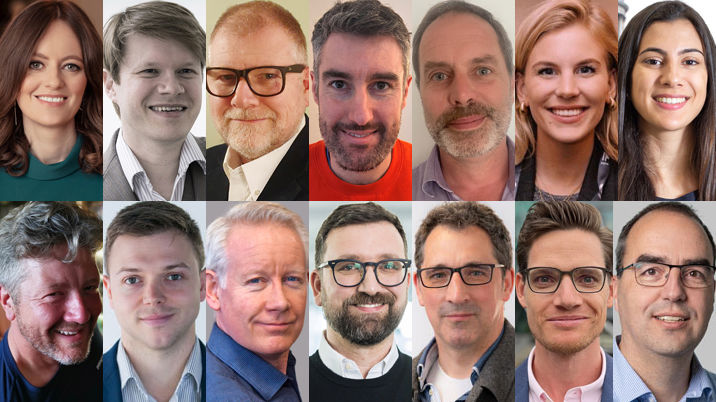
In the November / December issue of InPublishing magazine, we ran an AI Special, containing fourteen articles from leading publishers and suppliers.
On Tuesday, 28th January, we are holding an “AI Special — Q&A” webinar in which all the contributors will be available to answer your questions. So, please have a read through the articles, register for the webinar and come along armed with your questions.
To whet your appetite, I have picked out a nugget from each article:
- “The opportunity for publishers in data monetisation is broader than many realise. So much data has real value that is left unrealised.” (Data monetisation, by Jennifer Schivas, CEO of 67 Bricks)
- “There is also a great opportunity for creating bespoke services for significant business and government clients by using a combination of content from both sides. In this way, you could roll out multiple custom AI services for your major clients.” (New product development, by Markus Karlsson, CEO and founder of Affino)
- “The AI revolution is the latest — and potentially to date the greatest — opportunity to improve our working practices, unleash greater creativity, and ultimately increase margins so we continue to survive and thrive. But it’s still a gold rush era.” (What we’ve learnt so far at National World, by Tim Robinson, editorial director and publisher)
- “One key learning is knowing that hallucinations can exist where AI is used so it’s working with that knowledge and building in guardrails and processes around those possibilities rather than ignoring or hoping there won’t be any!” (Content discoverability, by Brian Alford, founder and CEO of Bright Sites)
- “Users today are familiar with popular AI chat tools, so personalisation interfaces should feel intuitive and easy to navigate. By adopting recognisable layouts and user-friendly navigation elements, publishers can help users focus on finding insights rather than learning a new tool.” (Personalisation, by Ben Tregenna, chief technology officer at Content Catalyst)
- “Productionising is essential. We have come to understand that without moving from experimentation to full technical production, we will inevitably hit a ceiling in workflow efficiencies. So, we need to build internal tools and products to help scale the usage.” (What we’ve learnt so far at Immediate Media, by Katja Eggert, head of strategic development)
- “Ask editorial for frequent feedback to tweak workflows. In the experiment, we found that the AI-enabled topic tagging did not always match the manual tagging by the newsroom. To reconcile differences, the editorial team provided detailed feedback to the tech vendor so as to adjust the settings of the model.” (Content strategy, by Aliya Itzkowitz, manager at FT Strategies)
- “The “Emperor’s New Clothes” phenomenon is huge at the moment when it comes to AI. And AI changes every few months. Don’t lock to current AI patterns or switch to AI enabled publishing and workflow that lack in other more practical areas. AI should not be the reason to replace a good system that does many things well.” (Workflow efficiencies, by Stewart Robinson, managing director of Full Fat Things)
- “We also learnt that creating a minimum viable product (MVP) with generative AI using our editorial content is relatively straightforward. However, monitoring and refining the outputs is vastly more resource intensive.” (What we’ve learnt so far at Infopro Digital, by Thomas Lake, director of product and technology)
- “Performing much of the heavy lifting of image optimisation requirements, automation provides core functionality and excellent results, freeing up the imaging department’s time to focus on the creative side of their craft.” (Image creation & editing, by Derek Milne, commercial pixometrist at Pixometry)
- “Perhaps the most surprising learning has been about the human factor. Far from resisting AI, journalists have embraced it — but selectively. They’ve shown enthusiasm for delegating technical and repetitive tasks to AI, especially those that have proliferated in the digital age.” (Journalism, by Peter Dyllick-Brenzinger, head of product and engineering at Purple)
- “The thing that we are finding most of a challenge is a combination of navigating the large number of tools that have emerged, as well as figuring out how to support folk in getting started with these technologies.” (What we’ve learnt so far at BMJ Group, by Ian Mulvany, chief technology officer)
- “Publishers should avoid relying on a single AI model to determine if a business case can be automated or optimised; instead, experimenting with multiple models is essential before drawing conclusions.” (Advertising, by Christian Scherbel, CEO at Smartico)
- “Copyfitting is a matter of nuance — the choice of a single word can make or break a piece of content’s effectiveness. AI can provide suggestions, help spark ideas, and offer options that editors can tweak to achieve the best results. This ‘dialogue’ with AI has proven to be effective in achieving polished, professional copy.” (Copy editing, by Tom Pijsel, VP product management at WoodWing)
Want to know more? Then come along to the webinar on the 28th. See you there.
You can catch James Evelegh’s regular column in the InPubWeekly newsletter, which you can register to receive here.












